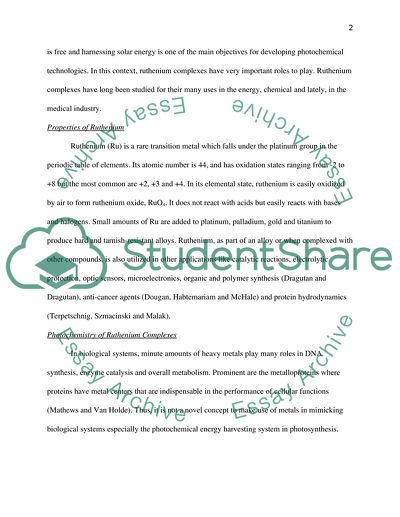Cite this document
(Photochemistry of Ruthenium Complexes Essay Example | Topics and Well Written Essays - 1750 words, n.d.)
Photochemistry of Ruthenium Complexes Essay Example | Topics and Well Written Essays - 1750 words. https://studentshare.org/chemistry/1549225-photochemistry-of-ruthenium-complexes
Photochemistry of Ruthenium Complexes Essay Example | Topics and Well Written Essays - 1750 words. https://studentshare.org/chemistry/1549225-photochemistry-of-ruthenium-complexes
(Photochemistry of Ruthenium Complexes Essay Example | Topics and Well Written Essays - 1750 Words)
Photochemistry of Ruthenium Complexes Essay Example | Topics and Well Written Essays - 1750 Words. https://studentshare.org/chemistry/1549225-photochemistry-of-ruthenium-complexes.
Photochemistry of Ruthenium Complexes Essay Example | Topics and Well Written Essays - 1750 Words. https://studentshare.org/chemistry/1549225-photochemistry-of-ruthenium-complexes.
“Photochemistry of Ruthenium Complexes Essay Example | Topics and Well Written Essays - 1750 Words”. https://studentshare.org/chemistry/1549225-photochemistry-of-ruthenium-complexes.


